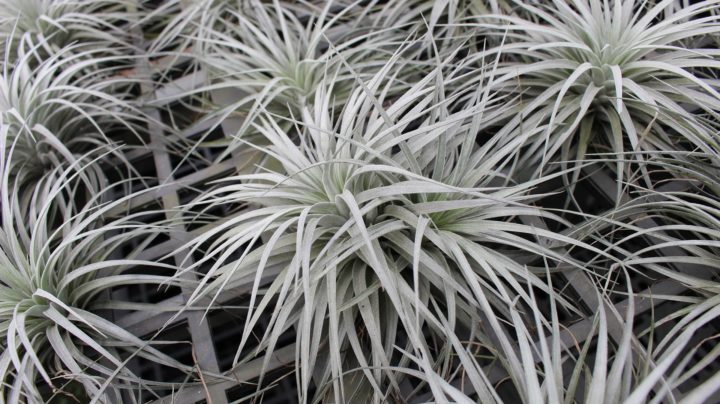The following contribution is from another author.
The humidity in your home, whether too much or little, can significantly impact your comfort level, health, and building structure. In addition, humidity can lead to mold and mildew growth in your home, causing respiratory issues and other health problems.
There is some degree of moisture in 10 to 20 percent of homes worldwide, making it crucial to know how to manage the humidity in your home. Newer homes have relatively higher humidity levels because the materials are still in the process of drying.
Luckily, there are some easy ways to get the humidity level in your home under control. In this blog post, we’ll give you tips on how to manage home humidity.
What is the Ideal Humidity Level?
According to the Mayo Clinic, the ideal relative humidity that is best for health and comfort is between 30-50% humidity.
Too low humidity can lead to dry skin, chapped lips, irritated lungs, and cracking or warping in wooden furniture due to lack of moisture. On the other hand, too much humidity can trigger asthma and other allergy attacks, cause respiratory problems, and lead to mold and mildew buildup indoors.
How Do You Measure Humidity Levels?
The best way to measure humidity is with a hygrometer. A hygrometer is a gadget that measures the amount of water vapor in the air. You can find hygrometers in most hardware stores, which are relatively inexpensive. Once you have a hygrometer, all you need to do is place it in an area of your home that you want to measure.
10 Ways to Reduce Excess Humidity in Your Home
The moisture level in your home depends on the weather and where you live. According to the U.S. Environmental Protection Agency, indoor relative humidity (RH) should not exceed 60%. Ideal humidity levels should be between 30-60%, same as the Mayo Clinic.
You’re not alone if your home feels damp, dank, and humid. Unfortunately, high humidity is a common problem many homeowners encounter, especially during the summer months. Here are things you can do to reduce excess humidity and make your home more comfortable.
1. Use Air Plants
One of the simplest ways to reduce moisture in your home is to use air plants such as tillandsia and spider plants. These plants thrive in humid environments, so they can help to absorb some of the excess moisture in your home. They also require little care, so they’re easy to keep alive. Not only will they help to enhance the air quality in your home, but they’ll also add a touch of greenery.
2. Put Plastic Sheeting in Crawl Spaces
Moisture can enter your home through the crawl space (the space between the ground and your ground floor). If there’s no vapor barrier in this space, ensure to install one properly, as it helps keep moisture from seeping into your home. Professional Crawl Space Remediation can also prevent pests, molds, dampness, rust, and corrosion. In addition, you should adequately ventilate your crawl space.
3. Fix Leaks and Seepages
Water leaks and seepages can come in several ways, such as rainwater in the basement. In addition, your plumbing system can leak water in your house, especially on pipes and sink joints, contributing to excess moisture.
It would help if you waterproof your basement to avoid water seeping in whenever it rains. Furthermore, you can fix all leakages and seepages and ensure that gutters and downspouts have been appropriately installed.
4. Have the Right Air Conditioner Size
Do you have the correct size AC for your home? If your air conditioner is small, it will run constantly and never really get your home to a comfortable temperature. This can worsen the humidity problem, as the AC constantly circulates humid air.
5. Get a Dehumidifier
You’ll want to invest in a dehumidifier, especially if you live in a humid area. A dehumidifier can remove excess and maintain moisture in the air, making your home more comfortable. You can choose a whole-house dehumidifier to treat all the rooms in your home.
6. Allow Plenty of Ventilation
Make sure you ventilate your home properly. Ventilation helps circulate the air and prevent the buildup of humidity.
7. Use Plastic Sheeting Before Laying Carpet
Concrete floors sweat a lot, especially when it meets with warm air, such as a carpet on top. That’s why it’s essential to use plastic sheeting before laying your carpet on concrete flooring to prevent moisture buildup. Moisture on your floor can lead to mold and mildew, which leads to air pollution.
8. Use Exhaust Fans in the Bathrooms, Laundry Room, and Kitchens
The most common sources of moisture in our homes are breathing, cooking, drying clothes, and showering. There’s nothing one can do about breathing, but you can try to control the rest.
You can practice covering your pots while cooking and install exhaust fans in bathrooms, laundry, and kitchen. The fans can remove hot air from these places and push out the moisture from the house.
9. Insulate the Ducts
Air ducts are prone to sweating and condensation, primarily due to the difference between outside air and the AC vent. Therefore, insulating the duct reduces the moisture in your home, saving energy.
10. Use a Sump Pump
Sump pumps come in handy when your basement or crawl space is flooded as it pumps water away from your home. However, leaving water in your basement leads to high humidity in your home, which can lead to musty smells, molds, and damage to your building.
How to Add Moisture to Your Home
Even though most new homes have higher moisture, you can expect it to dry completely and reach a moisture-balanced state after 18 to 24 months. However, here are some measures you may take to raise the moisture level in your home if you notice it is low.
Put Bowls of Water on Your Window Sills
On a sunny day, put bowls of water on your window sills. The water will evaporate and add moisture to the air.
Use Air-Purifying Houseplants
Having live houseplants like the bamboo palm and the peace lily is a great way to re-humidify your home through transpiration. Remember to water the plants regularly for excellent results.
Invest in a Humidifier
A humidifier is the most effective way to increase moisture in the air. You can opt for a small model to increase humidity in some rooms. Otherwise, go for a whole-house humidifier.
Other things you can do to increase humidity in your home are:
- Not covering your pots while cooking
- Leaving the bathroom door open during showers
- Air-dry your dishes
- Adding an indoor fountain
- Air-dry your clothes inside
Besides a humidifier, you can also invest in a direct vent wall furnace to provide comfortable heat in your home during the winter.
Signs of Excessive Humidity
Humidity can have some pretty nasty effects on your home. So how can you know if your home’s humidity is too high? Here are some indications that your home’s humidity is past ideal levels:
- Stuffiness
- Mold or mildew in your home.
- Musty smell.
- Rotting wood
- Condensation on your windows.
- Allergies
- Sleeping problems
- You’re sweating, even when you’re not doing anything physical.
Signs of Low Indoor Humidity
When the weather is cold and dry, it’s not just your skin that feels the effects. Low humidity can also cause a whole host of other problems. Here are signs that indicate that your home needs humidification.
- Dry, itchy skin
- Itchy throat
- Static electricity
- Dry sinuses
- Cracked lips
- Cracked furniture
- Peeling paint
Keep Your Family and Home Safe
Managing humidity in your home is crucial for your family’s comfort and health. It’s also essential to control the moisture levels to ensure your building structure is not damaged.
It’s good to note that humidity levels will depend on the season. Summer comes with high humidity, while winter can make your home’s air feel dry. So ensure to use your hygrometer once you feel a change in your home air quality.
Read our article on top tips to keep in mind as a new homeowner for a successful transition into your new home. Hopefully, this article provides helpful information that helps you control the humidity.

















Also, remember to change your AC filter once every 2-3 months to avoid increasing the humidity level. A highly functioning air conditioner will help manage humidity in the home, but one with a clogged filter can leave humidity unchecked. If the air filter is clogged, air cannot flow through it effectively, allowing moisture to accumulate due to improper ventilation.
You made some decent points there. I looked up the issue on the Internet and found that most people feel the same way as you do. I wanted to stop by and tell you how much I enjoy reading your site. We’re grateful for all of your helpful tips